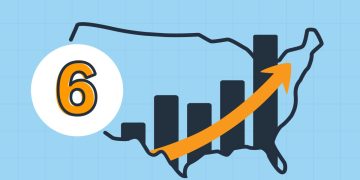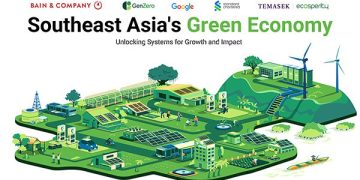Introduction
After a prolonged period of surging and highly volatile commodity prices, many market participants are now questioning whether we have reached a critical turning point. Energy, metals, and agricultural commodities—once propelled by a perfect storm of supply disruptions, soaring demand, and geopolitical shocks—are showing signs of moderation or even retreat. The fundamental question facing producers, consumers, and investors alike is whether this signals a sustained shift or merely a temporary pause in an ongoing cycle of volatility and price inflation.
The dynamics driving these changes are multifaceted. Supply-side responses, demand uncertainties amid a fragile global economy, geopolitical developments, currency fluctuations, financial market behavior, and structural shifts toward sustainability all converge to shape the commodity landscape. This article explores these interconnected forces in detail, examining the underlying causes and potential future trajectories for commodity prices.
The Surge and Initial Signs of Plateau
Commodity prices saw unprecedented spikes starting in 2020 and extending through much of 2021 and early 2022. The COVID-19 pandemic created severe supply chain disruptions, labor shortages, and logistical bottlenecks, dramatically constraining production and distribution capacities across the board.
Simultaneously, aggressive fiscal and monetary stimulus programs boosted consumption, particularly in developed economies. Demand for energy to power economic reopening, metals to build infrastructure, and agricultural goods to feed shifting consumption patterns soared.
By mid-2022, many commodities had reached multi-year or all-time highs. However, as 2023 progressed, notable slowdowns in price growth and outright declines in key commodities like crude oil, copper, and wheat became apparent. This shift prompts a reassessment of market fundamentals.
Supply Responses Gaining Traction
High commodity prices naturally incentivize producers to increase output. Oil-producing countries under the OPEC+ umbrella have cautiously expanded production quotas, aiming to balance revenue goals with market stability.
Mining companies, after years of underinvestment, are accelerating capital expenditures to bring new mines and processing facilities online, especially for critical metals such as copper, nickel, and lithium. Agricultural producers have adjusted planting decisions to capitalize on elevated prices, signaling potential increases in supply in upcoming seasons.
These supply adjustments help alleviate shortages and ease upward price pressures. However, lead times for bringing new production online remain lengthy, especially in capital-intensive sectors, which means supply constraints may persist or re-emerge if demand rebounds strongly.
Demand Uncertainty and Economic Headwinds
Global demand, the other half of the commodity equation, faces considerable headwinds. Rising inflation and the resulting monetary tightening by central banks worldwide have dampened growth prospects.
China, a major consumer of industrial commodities, has shown signs of slower industrial activity and weaker property markets, reducing demand forecasts. Energy demand growth is challenged by rising energy efficiency, growing renewable energy penetration, and policy measures aimed at decarbonization.
Consumer sentiment and manufacturing indices in key economies indicate caution, further clouding demand outlooks. The risk of recession in advanced economies adds another layer of uncertainty, potentially suppressing commodity consumption for an extended period.
Geopolitical Factors and Market Sentiment
Geopolitical tensions remain a wildcard influencing commodity flows and prices. Conflicts, sanctions, and trade restrictions disrupt supply chains and create regional scarcities, fueling price volatility.
The war in Eastern Europe continues to impact energy supplies and grain exports, while U.S.-China trade tensions influence technology-related metals and rare earths markets. However, any easing of tensions or diplomatic breakthroughs could quickly reverse recent price declines.
Conversely, escalation of conflicts or new sanctions could reignite price spikes. Market sentiment closely follows these developments, often resulting in sharp, short-term price swings detached from long-term fundamentals.
Currency Dynamics and Inflationary Pressures
Commodity prices are heavily influenced by the strength of the U.S. dollar, as most commodities are priced in dollars globally. A stronger dollar tends to suppress commodity prices by making them more expensive for holders of other currencies.
Recent monetary tightening and changes in inflation expectations have caused fluctuations in the dollar’s value, contributing to commodity price volatility. Inflation also directly affects production costs, such as energy and labor, which can pressure supply chains and, in turn, prices.

Financialization and Speculative Flows
Financial markets have become increasingly entwined with commodity price behavior. Hedge funds, institutional investors, and commodity ETFs have added layers of complexity to price discovery.
Speculative positioning can drive prices beyond what fundamentals would justify, leading to bubbles or crashes. Sudden shifts in investor sentiment can cause rapid reversals, complicating market predictions.
The rising role of algorithmic trading and leverage amplifies these moves, making commodity markets more reactive to news and macroeconomic data.
Structural Transformations: Energy Transition and ESG
Longer-term, commodities are being shaped by structural trends like the global energy transition. Demand for fossil fuels is projected to plateau or decline in advanced economies, while metals vital for clean technologies—such as lithium, cobalt, and rare earth elements—face changing demand patterns.
Environmental, Social, and Governance (ESG) considerations increasingly influence investment flows and corporate strategies, affecting supply chains and investment in extraction and production technologies.
These transformations add complexity to price forecasting, as traditional cyclical patterns blend with new, technology-driven demand drivers.
Implications Across the Spectrum
For producers, recognizing this turning point is critical for investment planning, capacity management, and risk mitigation. Overinvestment risks could lead to oversupply and price crashes, while underinvestment might cause shortages and supply shocks.
Consumers, from manufacturers to utilities, must navigate cost pressures and potential supply uncertainties. Hedging strategies and supply chain diversification become paramount.
Investors face challenges balancing exposure to cyclical commodity rallies against the risk of sudden reversals and structural shifts. Diversification, active management, and a keen eye on global macro trends are essential.
Conclusion
The evidence points to a complex, multi-layered turning point in commodity prices. Supply-side improvements, weakening demand, geopolitical dynamics, currency movements, financial market behaviors, and structural shifts all interplay to reshape the commodity landscape.
While some commodities may enter phases of moderation or decline, others will evolve in response to technological and sustainability trends. Market participants must stay vigilant, continuously re-evaluating conditions and adapting strategies to thrive amid this evolving environment.
Understanding the diverse and often hidden drivers behind commodity price movements is key to anticipating risks and opportunities as the global economy transitions through this pivotal phase.



































